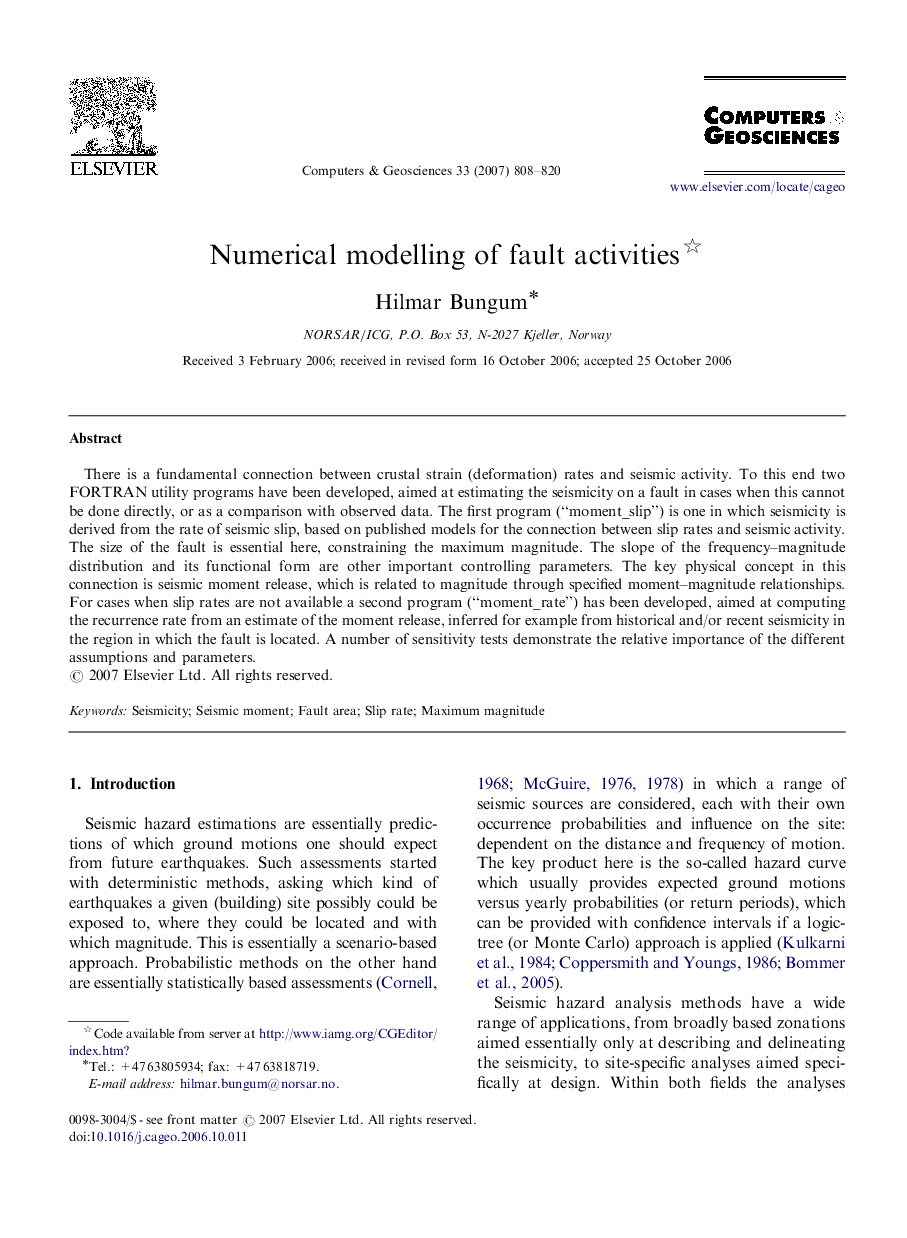| Article ID | Journal | Published Year | Pages | File Type |
|---|---|---|---|---|
| 508453 | Computers & Geosciences | 2007 | 13 Pages |
There is a fundamental connection between crustal strain (deformation) rates and seismic activity. To this end two FORTRAN utility programs have been developed, aimed at estimating the seismicity on a fault in cases when this cannot be done directly, or as a comparison with observed data. The first program (“moment_slip”) is one in which seismicity is derived from the rate of seismic slip, based on published models for the connection between slip rates and seismic activity. The size of the fault is essential here, constraining the maximum magnitude. The slope of the frequency–magnitude distribution and its functional form are other important controlling parameters. The key physical concept in this connection is seismic moment release, which is related to magnitude through specified moment–magnitude relationships. For cases when slip rates are not available a second program (“moment_rate”) has been developed, aimed at computing the recurrence rate from an estimate of the moment release, inferred for example from historical and/or recent seismicity in the region in which the fault is located. A number of sensitivity tests demonstrate the relative importance of the different assumptions and parameters.
